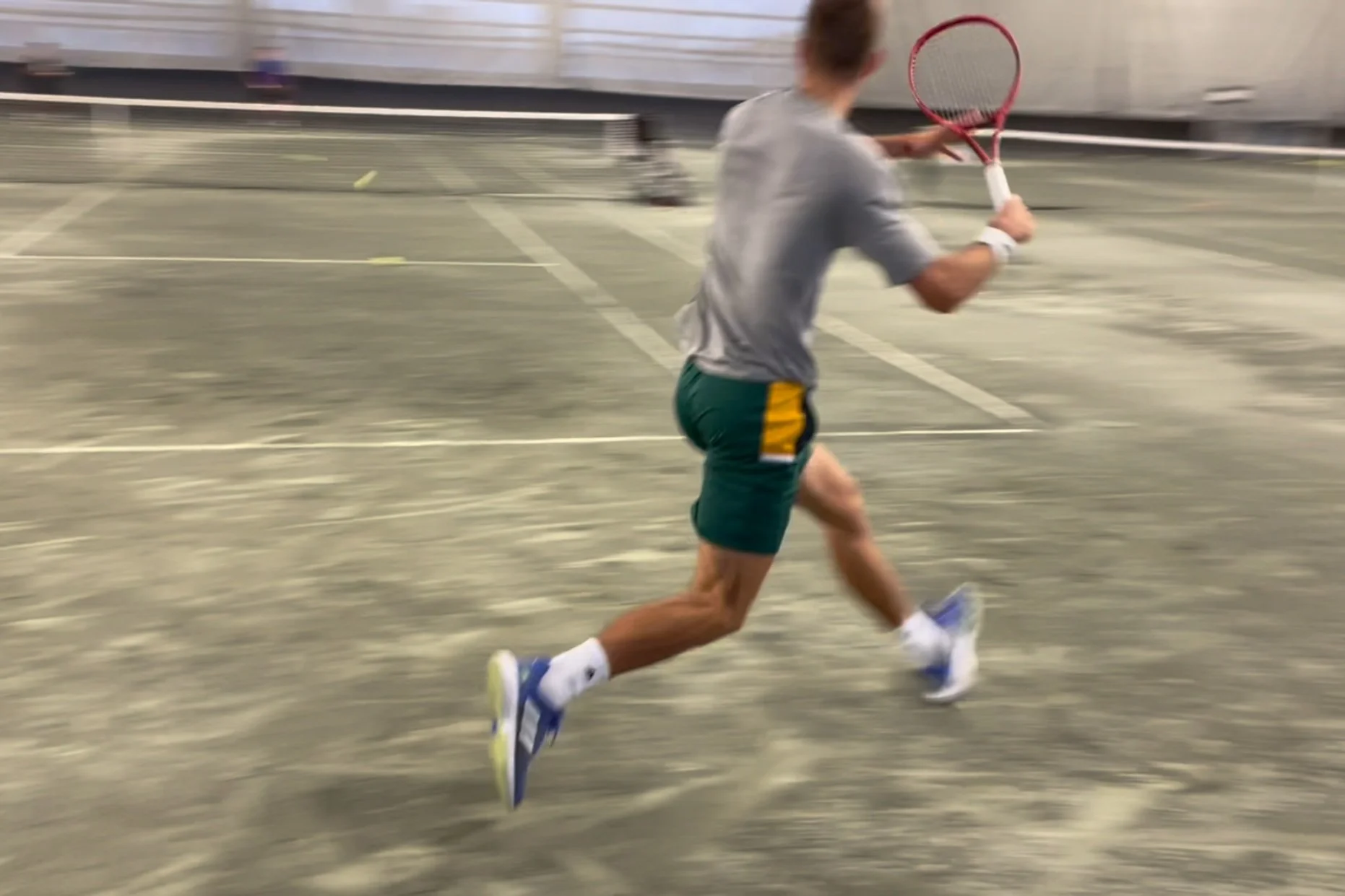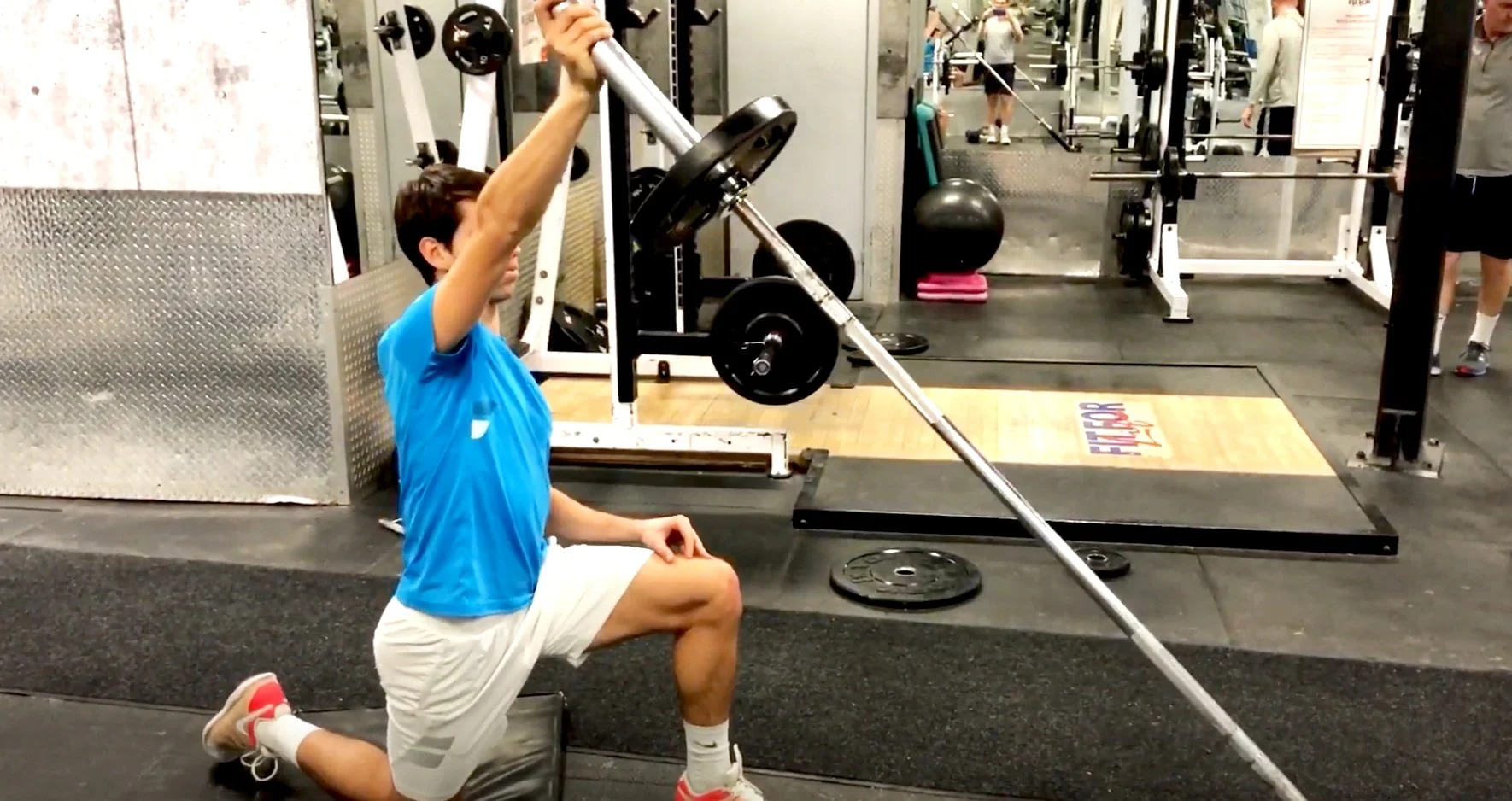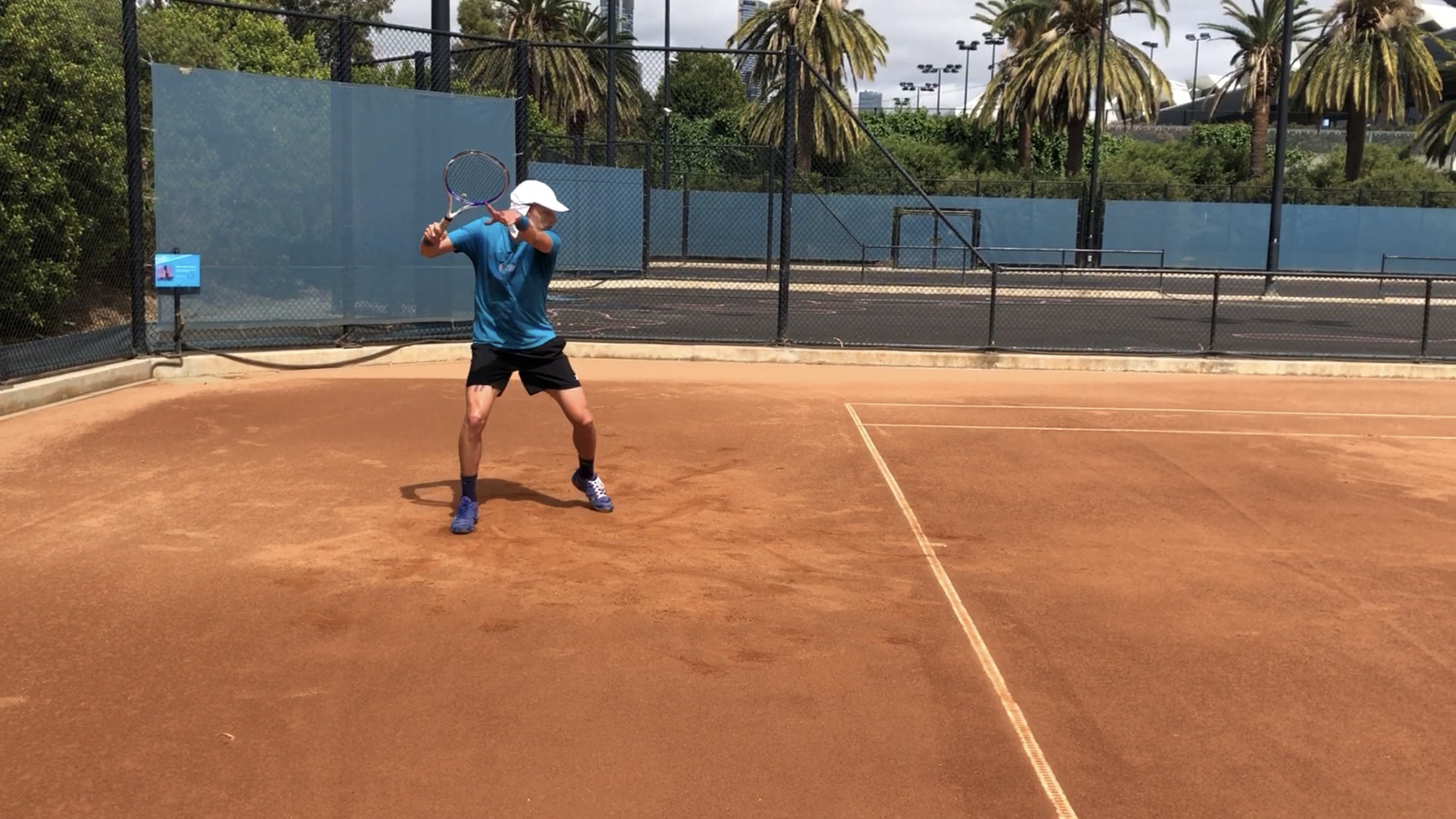Below are 6 training modalities that I believe should never leave a tennis player’s off-court training program.
Whether a player is has a period without tournaments - or they’re in-between events - I believe the inclusion of these training types (in some form), is imperative to remain healthy and to perform at peak levels.
Let’s explore each in a little detail:
1 - Plyometric Training - If you only had to choose one training type to add to your off-court program, it would be plyometrics.
Have you ever hit a serve where everything just seemed to come together? You felt coordinated. Powerful. The ball came off your racquet like a rocket.
On the flip side, we’ve all hit serves that felt off-balanced. Off-centered. Lacked pop. And landed everywhere but the service box.
Many in tennis associate shoulder health with resistance band exercises. Listen to coaches and trainers talk about shoulder strength or injury prevention with their players and you’ll surely hear things like “are you using your bands daily?” or “make sure to do ‘x’ or ‘y’ band exercise”. But do band exercises work in the manner that they’re spoken about?
I’d like to offer my take on the matter and suggest 2 other strength training methods - light weight and moderate/heavy strength exercises.
t’s no surprise that I’m a fan of strength training (as long time readers of Mattspoint would know).
But strength training is an more of an umbrella term than just one type of training modality. Because there's just so many different ways that we can lift weights. Here are a few examples:
Lift light weights fast - explosive (or speed) strength. Lift heavy weights slow (with a fast/explosive intention) - maximum strength. Lift moderate weights fast - strength speed (or rate of force development).
I’ve said it before but I’ll say it again - the most specific form of training for tennis is playing tennis! Thus, tennis training - which includes on-court drills, live ball hitting, practice sets (and even tournament matches) - is the truest form of ‘sport-specific physical training’ for tennis.
So if you hear someone talk about ‘sport-specific training’ and they’re jumping on a bosu ball, performing shadow swings on the beach or some other random exercise, that is NOT sport specificity.
In this episode, the creator of Jump Science - Daniel Back - joins me to talk strength training for athletic development.
Coach Back shares why the back squat will improve both explosive + athletic movements like no other weight room exercise and why it's superior to the front squat or unilateral training as the 'primary lift'.
I get a fair amount of questions sent my way on a weekly basis and this past week was no different. But I thought it would be best to share them on the blog for others to benefit from as well (especially given that the questions were quite good and very relevant to what I often hear from coaches and players).
Let’s get to them!
Here’s the thing, it’s kind of a mess out there, isn’t it? From the latest & greatest exercises to outdated information - and promises of quick results - the tennis fitness world can be a confusing place.
The truth is, there’s no one best exercise or one best program or one best [insert training fad of the week].
Instead, what we are left with are principles. Scientific principles to be exact. Like specificity and progressive overload and adaptation. So if a program is built on this type of foundation, improvements are almost ensured. If not...well, the reverse is probably true.
Don’t believe me? Consider for a moment what my clientele looks like:
I recently saw a post on a Facebook coaching forum. It was actually a question that went something like this, “coaches, have you seen any of your players improve their tennis because of their physical training?”.
My hand immediately covered my face and I began shaking my head in disbelief (no, no, no...it can’t be).
My answer to the question is an emphatic YES! Of course I’ve seen - on numerous occasions - physical preparation directly benefiting a player’s tennis game.
This past summer, we saw an influx of tennis players join our fitness programs. Many tennis players simply play tennis during the summer months - so having them join our off-court sessions was a good thing. A typical schedule for these players would see them hitting for about 1.5-2 hours per day and spending another 3-4 days with us in the gym.
While it’s great to see tennis players getting after it in the weight room, we spotted an unwanted trend amongst the group. Fatigue. But not the fatigue you’d normally encounter after 2 hours of tennis or a gruelling match. No, this was more of a general type of fatigue. One that’s typical amongst tennis players (especially juniors) but isn’t always easy to pinpoint it’s root cause.
Most of us in tennis won’t argue that today’s game requires high levels of explosive strength - or as it’s often called - power. But many disregard some of the most influential exercises that contribute to this quality: olympic weightlifting movements.
In case you’re not familiar with olympic weightlifting movements, they consist of the clean, snatch, jerk and any variations or derivatives of these 3 lifts (videos examples are found throughout this post).
By this point, I think we’re beyond prescribing tennis players to run long and slow (at least I hope we are). If you want to understand why this is the case, I urge you to read through this post, as I outline how the energy systems work and interact with one another.
Yet we still need players to be able to endure tough points, tight sets and long matches. No question about it. So how do we do this?
Coaches, players, parents...even your aunt Judie know the importance of the serve in today’s modern game. More specifically, the first serve. The first serve is so critical that the top 10 servers on the ATP, year after year, win over 77% of their first serve points! And it’s not just on the men’s side. The top 10 women on the WTA win between 69%-79% of first serve points.
Want more proof? Look at Table 1 - in 2016, the top serving men won over 3/4 of their first serve points. On the other hand, when these top pros missed their first serves, they only won between 52% and 55% of their points.
This is a 2-part post. In today's article, we’ll take a brief look at the most important physical qualities a player should focus on during the off-season and how to best train them. Part 2 will then focus on the application - how a microcycle might be organized, how it fits into the overall training cycle and the interplay between on and off court training.
Medicine ball training is a widely popular training modality amongst tennis players at all ages and levels. More specifically, med ball (MB) training is primarily used to augment rotational power. For a review of the underpinning science and theory on this topic, please take a look at a previous post on this topic. Why augment rotational power though? Today's game is classified as power based - players are hitting the felt off the ball. The rationale from a training perspective is as follows: increase rotational power and you'll increase hitting speeds - whether that's groundstroke or serve speeds.
In last week’s post, we took a closer look at the principle of progressive loading and offered several ways in which we can effectively ‘progress’ a player both on and off the tennis court. To reiterate last week's point, it’s critical that we look at progressions from a long-term macro perspective. Why so? Well, progress is rarely (if ever) linear. Further to that, each of the biomotor qualities that we spoke briefly about last week (speed, strength, stamina, suppleness, skill), improve and regress, depending on which we give greater attention to (i.e. more training stimuli).
In last week’s post, we took a closer look at the force-velocity relationship and it’s underlying science. Recall that when force requirements are high, velocity outputs will be low - and vice versa. This has important implications because of the different movement requirements on a tennis court along with the methods used to improve relevant athletic qualities. Look at the figure below - it’s a theoretical look at where certain movements and strokes etc. lie on the force-velocity curve (this is an adapted representation based on science and my anecdotal experience). Even some of these movements will have different force-velocity requirements at the muscular level - when decelerating for a wide ball for instance, the initial deceleration step will have higher forces acting on the lower-body then the last step just before planting (because we’re trying to stop from a relatively fast movement speed).
This is the final part of a series of posts on change-of-direction (COD) in tennis…for now anyway. While we’ve touched on a number of key aspects of COD, researchers are only beginning to uncover the complexities of this athletic quality. This week’s post will briefly highlight why many in the tennis world believe that strength training doesn’t have a place when it comes to improving COD ability - and how the landscape has changed; and why straight line sprinting, although initially proposed as a key factor in COD ability, doesn’t really correlate after all. We’ll finish up with some practical examples of how purposeful strength training means can improve each phase of COD - the deceleration, planting and propulsive phases.
In previous posts on COD, we spoke about the importance of reactive strength. In particular, we emphasized the role leg and ankle stiffness plays in the production of reactiveness. Ultimately, high levels of reactiveness are predicated by very fast eccentric-concentric muscle actions. These actions impact a variety of movements in tennis, including any type of first-step reaction that involves very little changes in knee, hip and ankle amplitudes. `
But what about movements that have longer ground contact times? For instance, a player is forced into a deep lunge position - perhaps because of a fast low ball or because they’re retrieving a low volley at net. To recover from these types of scenarios requires qualities that extend beyond reactiveness. This is where strength and power qualities come into play. While reactiveness is great when joint angles are small, inertia is low and ground contacts are short, when these parameters are reversed, fast stretch shortening cycle (SSC) abilities won’t cut it.
Most tennis players spend hours on the practice courts. And for good reason - tennis is darn tough. The question is, are these hours on court productive hours or redundant? How can we know? To assess whether our training is effective (and that it'll transfer to matchplay) we must first understand the demands of elite tennis.
In this post, we’ll review a study by Pereira et al (2016) that dives into the movement details of professional tennis. Other studies have previously analyzed movement characteristics; but, those studies replaced tournament matches with simulated matchplay. The present study observed movement characteristics via official ITF sanctioned matches.



















